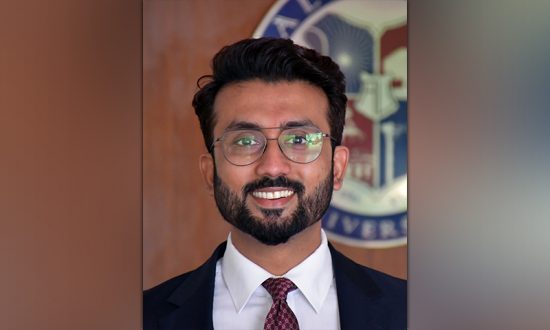Mr Abhay G. Chebbi is the Pro-Chancellor at Alliance University. Prior to assuming this responsibility, Mr Abhay has worked in several directorial capacities at the university over the last decade. Prominently, he held the position of Director – Admissions and was responsible for student intake across programs offered at the University. In this said role, Mr Abhay also played a pivotal role in promoting Executive Education at the University and during his stint in the Office of International Affairs, Mr Abhay was instrumental in successfully establishing international partnerships with reputed universities in Germany.
The higher education landscape in India has been evolving and with the pandemic, an urgent need to revolutionize offerings in Universities has become pronounced. It is estimated that by 2025, India will have 119 million 18–22-year old’s, in essence, making India home to the largest student population in the world by then. In the book ‘India’s Economy and Society – Lateral explorations, a chapter titled ‘Changing Landscape of Professional Higher Education in India: What Do We Know and What Do Recent Data Tell Us?’ by authors Pradeep Kumar Choudhury and Amit Kumar, highlight the rapid expansion of professional higher education in India in its several dimensions. One of the key findings of this study is the regional inequality in the growth of professional higher education in India over the last decade with close to 40% of such institutions present in the southern region and less than 10% covering central, eastern, and northern-eastern regions.
While the above statistic is alarming in terms of the skewed geographic presence of professional higher education through institutions, it can also be seen as an opportunity to differentiate offerings to enhance quality of education based on the tenets of equality and ease of access. Another important aspect that needs to be borne in mind is ‘Education has never been more expensive to provide than it is today’. It is therefore critical for institutions like ours to create value for investment, and this can be achieved through continuous innovation in academic offerings and enhancing student preparedness to transition from campus to corporates, through robust industry interfaces.
While the pandemic created a further divide between the rich and the poor in terms of affordability and access, one must not see this in absolute terms of injustice done to the middle- and lower-income levels. The pandemic created tremendous pressure on higher educational institutions to rethink and rework their strategies, bearing in mind student well-being. This led to most institutions offering a hybrid mode of learning, ensuring uninterrupted learning, which reexamined modes of assessment or academic delivery. Universities created strategic roadmaps through institutional tie-up and offered additional certification programs, based on student’s interests and such courses were either assigned credits or offered as part of student preparedness to make a successful transition to corporates of their choice. Innovation became the ‘need’ and most Universities responded to the situation by implementing online teaching & learning, thus displaying preparedness to be part of this revolution – that which will redefine the trajectory of higher education in India.
Some of the trends that might continue to dominate the year 2022 and beyond are as follows:
1: Online learning will become more of a mainstream activity with greater acceptance rates, given that learning can happen at the comfort of homes, on a mobile device, with strong internet connectivity. Students and families might prefer this over traditional set ups in the higher education space.
2: Technology will continue to create breakthroughs and the higher education space might get to see a virtual interface across functions, much more than what it is now.
3: Academic delivery – the teaching and learning process, will go through several iterations – Liberal education will gain greater prominence; Choice-based learning will become the norm; Smaller groups of students and not necessarily within a classroom setting will learn unique concepts that are future-driven; and Skill-based learning will eventually emerge as a winner, with clear alignment with career opportunities.
4: Formal degrees of a certain length will slowly have to be revamped into certification programs with defined exit options, enabling students to opt out and study multiple courses at the same time.
5: Partnerships with industry on several joint initiatives to strengthen research and development will take place, bridging the industry academia gap.
While there are myriad ways of strengthening the future of higher education in India, it is ultimately for private institutions like ours to welcome students from all strata of the society, encourage merit-based scholarships for the deserving, reserve a certain % of seats exclusively for girl students and students from the economically challenged backgrounds and provide the required impetus to strengthen the notion of ‘Education for all; Access to all’ as an underlying principle. While the pandemic might continue to exist, the only hope is to see reduction in its severity and impact, while allowing the future generations in India to have a very strong educational foundation, based on social exchange and experiential learning in formats that enrich holistic development.




